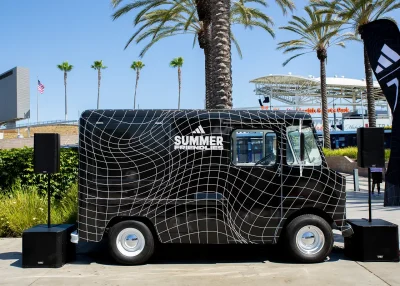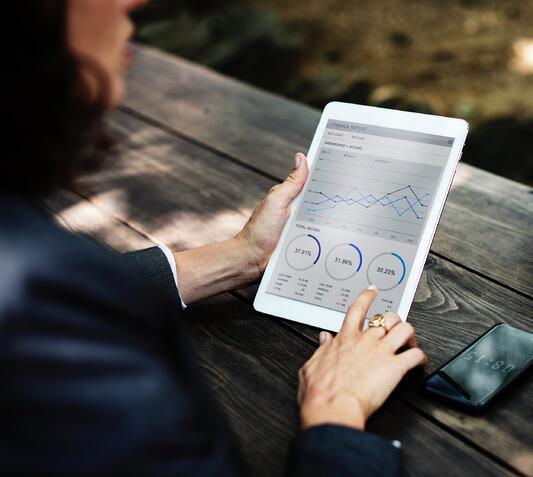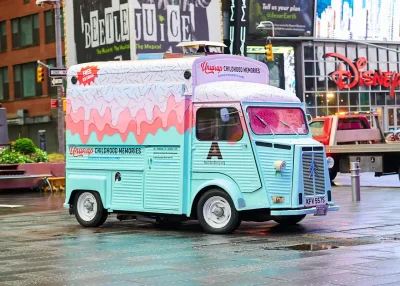
Marketing in Motion: The Rise of the Mobile Marketing Vehicle
While traditional advertising still has its place, modern brands are constantly seeking more creative and interactive ways to connect with their target audiences. Thanks to
In 2021, brands need experiential marketing data in real-time to know if their live events worked. And— if not— how to correct any mistakes for the future. But let’s face it, experiential marketing metrics are a tricky road to navigate.
There are dozens of KPIs at a marketer’s disposal to measure. That’s a lot! Between planning and launching a campaign, who has the time to analyze all that data? Are they even the right ones?
Don’t be deterred. We’re breaking down the 5 experiential marketing metrics you need to know so you can be sure whether all your hard work paid off.

Before we jump into our “top 5,” it’s critical to start your journey at the beginning. You need to pinpoint the overall objectives of your campaign. So, whether it’s increasing Instagram followers or boosting brand awareness— carve out plenty of time to set your goals. Your experiential marketing metrics should also be SMART. What does that mean? Let’s take a closer look:
Whatever your campaign goals are, the bottom line is to ensure you have the right strategy in place well before you launch.
Whether email marketing, feedback surveys, or social media posts, you’ll probably utilize a call-to-action (CTA) to prompt an immediate response— like subscribing to your newsletter or visiting your website. But is your CTA relevant? Does it resonate with your audience?
Measuring these experiential marketing metrics will help you determine if your call-to-action had a positive impact. Lucky for you, there are tons of examples to choose from that’ll help you plan the right CTA for your campaign.
Billions of people were stuck indoors for much of 2020, and that meant many were browsing online, perhaps mindlessly clicking on or signing up for events they couldn’t realistically attend. So for all those who registered for an event you hosted, how many showed up?
There will always be a disparity, but diving deep into these experiential marketing metrics will help you determine if you missed an opportunity. One that kept people from attending your event.

Tracking your experiential marketing campaign’s impact on social media is so much more than views and likes. They can paint an unrealistic picture of success. Why? Because it’s all about impressions and engagement.
But there’s a difference between them. Impressions tell you how many times your content reached an audience. On the other hand, engagements measure direct and active interactions between a user and your content (i.e., shares and comments). When audiences frequently visit your social media profiles, are regular commenters, and share your content often, they’re more likely to become pro bono brand ambassadors.
It almost doesn’t matter if you hosted a spectacular event if you went over budget. Your campaign still needs to be paid for. Before you activate, keep in mind whether your campaign is cost-effective.
And after your campaign, the best way to calculate this is with experiential marketing metrics that examine cost per attendee or sale. That means determining how much you spent versus how much revenue you secured as a result. This could mean how many tickets were purchased or how many attendees converted into customers or subscribers.
Your campaign is only as good as what your audience thought of it. Experiential marketing metrics that seek out feedback during and after your campaign is the best way to know what worked, what didn’t, and how you can improve in the future.
Incentivizing feedback with prizes and swag will increase your chances of more people offering their thoughts. And quantitative and qualitative data help you analyze that feedback into two parts as quantitative data uses numbers, while qualitative data is emotionally based.
In the past, getting a comprehensive analysis of experiential marketing metrics was a tall order. But in 2021, there’s no excuse to be in the dark. Thankfully, there are plenty of tools that enable organizers and marketers to plan campaigns and track KPIs with ease. Experiential marketing metrics allow you to measure your success and communicate those results with hard facts. And that’s half the battle won when using experiential marketing to take your business to new— and greater— heights.

While traditional advertising still has its place, modern brands are constantly seeking more creative and interactive ways to connect with their target audiences. Thanks to

In today’s crowded marketing landscape, brands are constantly seeking ways to stand out and forge real connections with their audiences. Enter the experiential marketing vehicle

In today’s competitive landscape, brands must do more than advertise — they must be willing to connect. But what’s the best way to start that